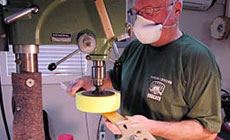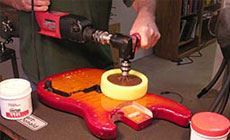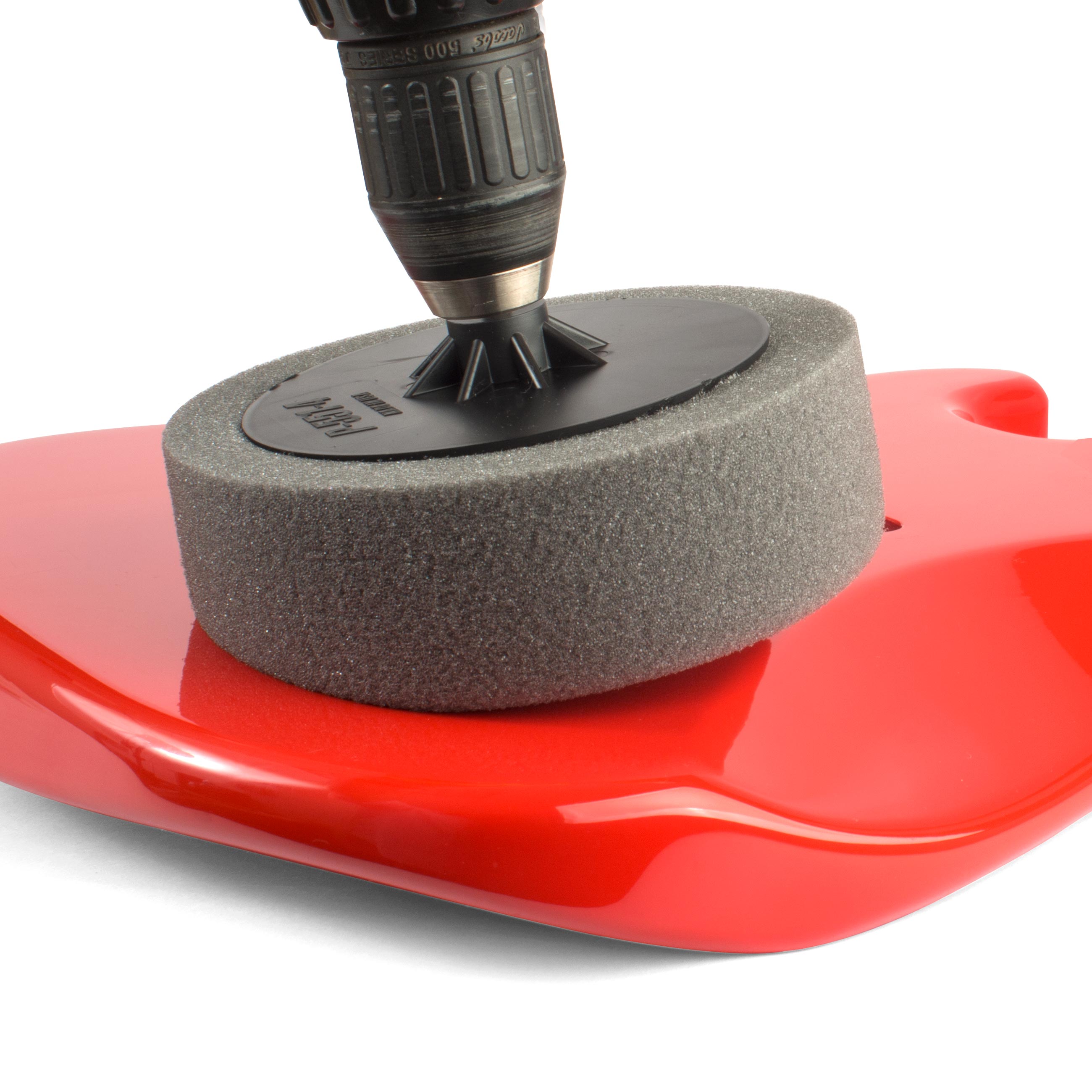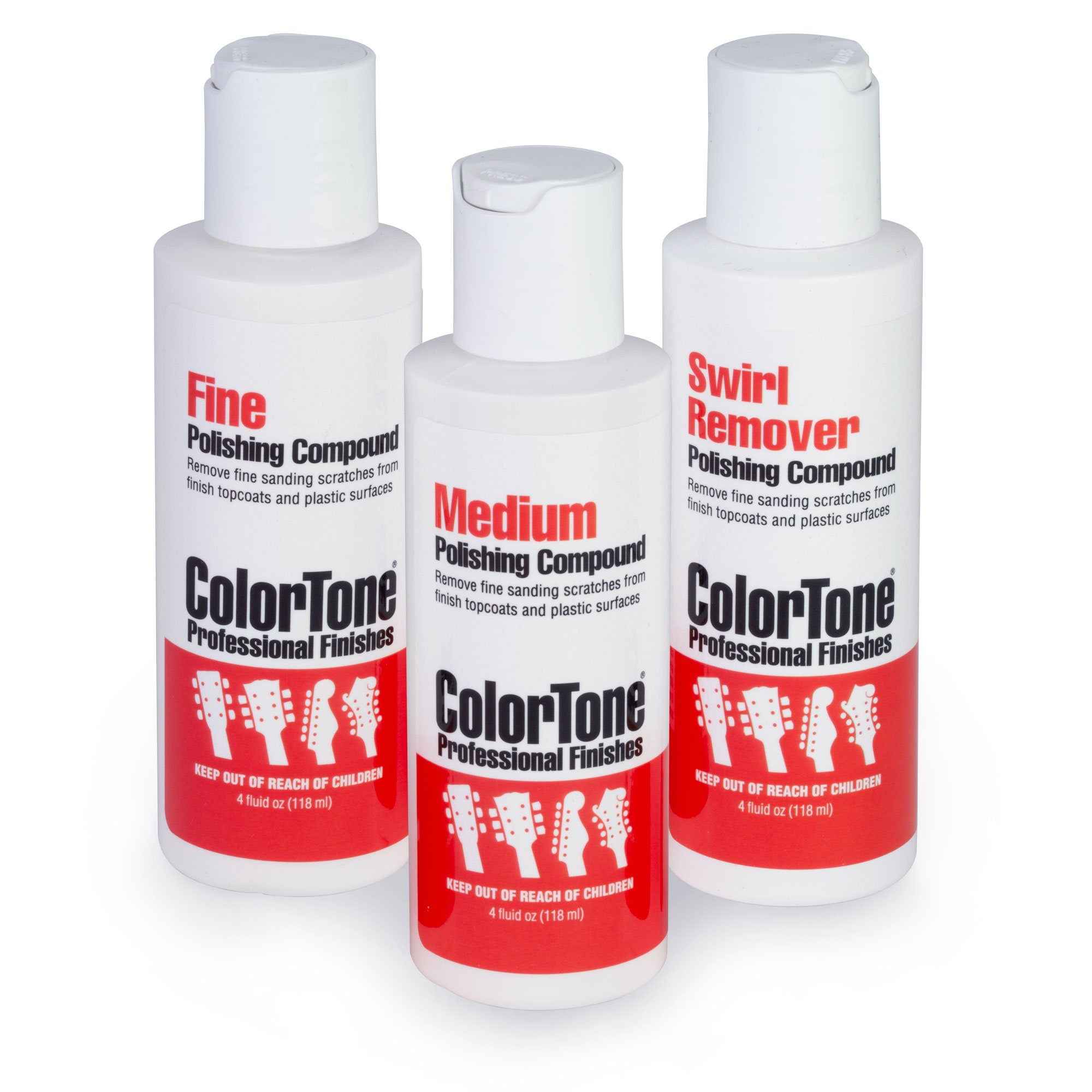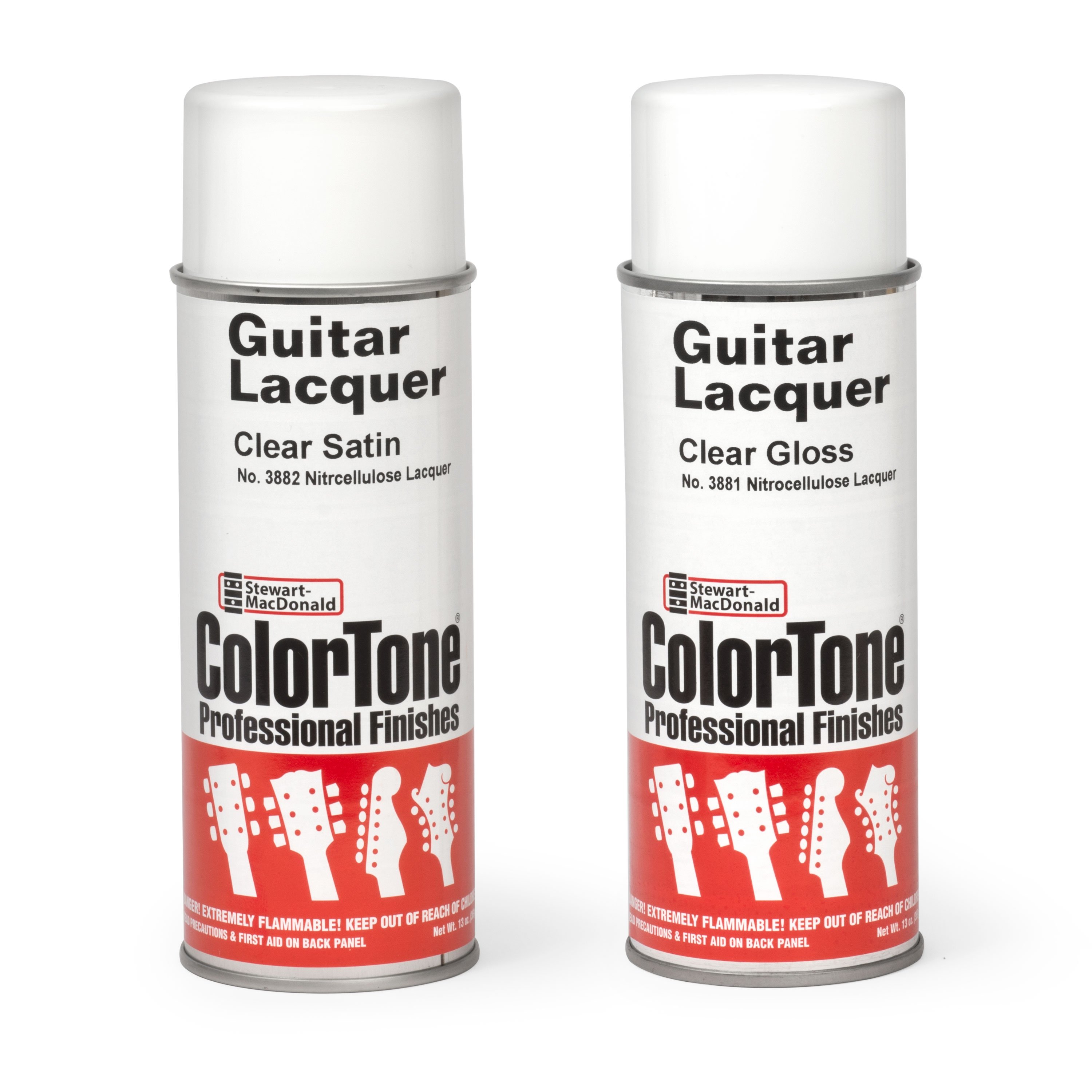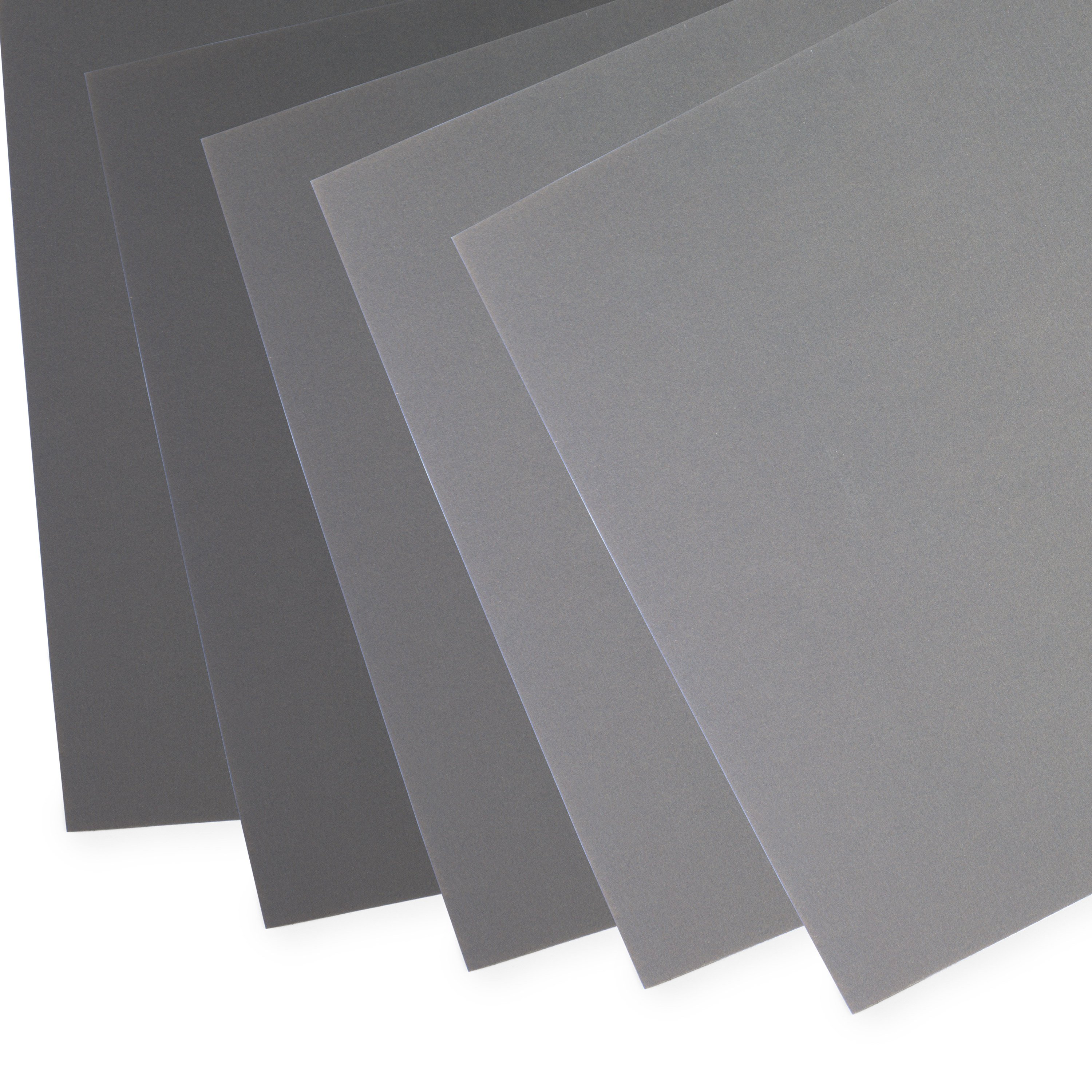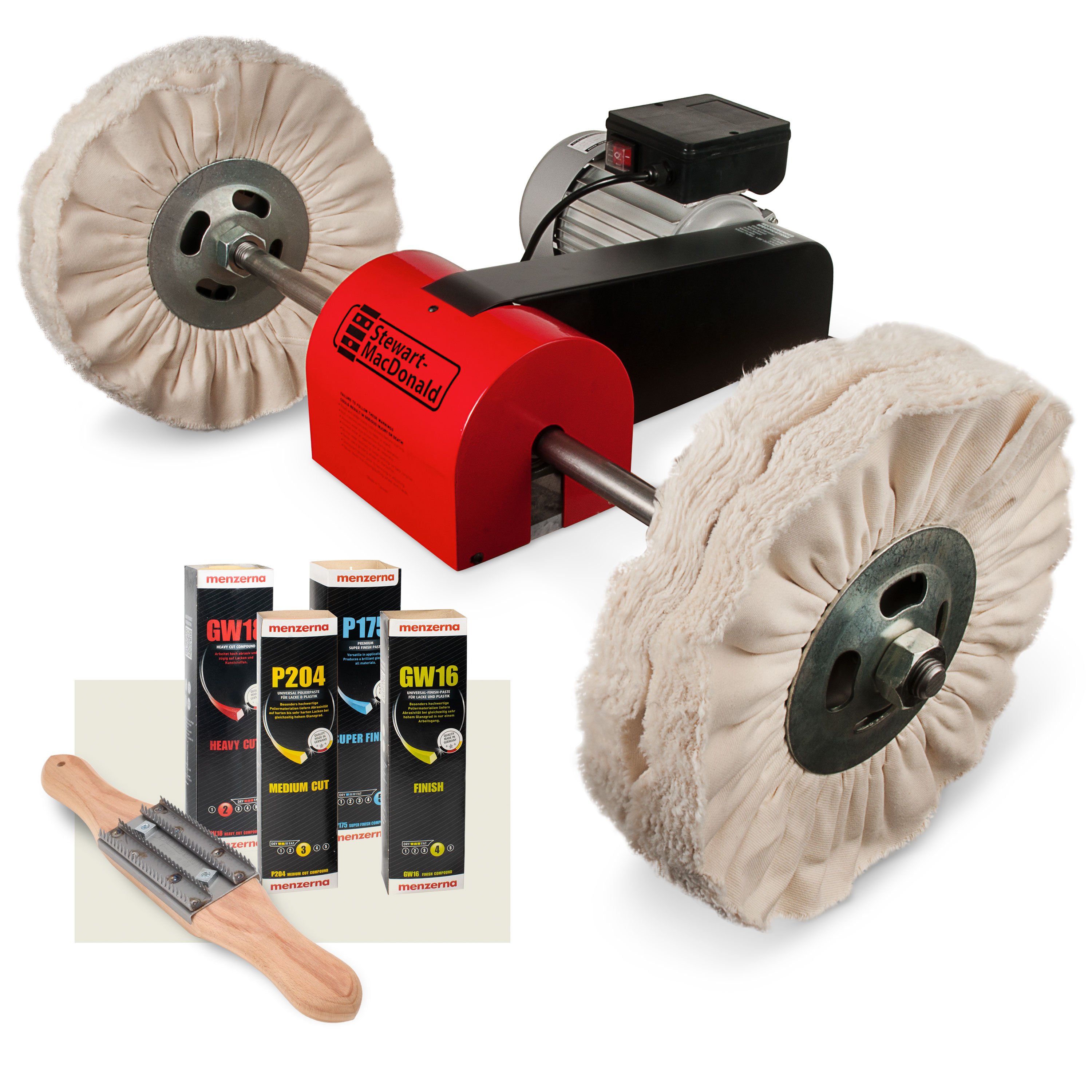Using a foam buffer in a hand drill on Junior Brown Guit-Steels®
The Guit-Steel idea came to guitarist Junior Brown in a dream. Junior took his idea to Michael Stevens, the rootin’ tootin’ cowpuncher/guitarmaker from Alpine, Texas. Hanging in Mike Stevens’ shop, they look great. But just before finishing, Mike’s hand-held automotive buffer bit the dust. "I can’t buff them on a pedestal buffer because of their shapes," he says. "For odd-shaped jobs, I've always used my old Skil buffer with a lamb’s wool pad." He called StewMac to see what else is available, and we set him up with some Finesse polishing pads, the simple foam buffers that work with a handheld drill. "I’ve never used foam pads," he said. "Are they worth a try?" After wet-sanding up to 1200-grit with Micro Finishing Paper, Mike used two foam pads with coarse and medium ColorTone paste polishing compounds, buffing the Guit-Steels on a padded bench. The padded ledger board at the rear of the bench is for the body to bear against as Mike works. After buffing with the medium compound, he used the fine compound by hand in the corners, then final-polished with swirl remover using a fresh foam pad. The Guit-Steels buffed out great, meeting the high standards expected of Stevens Guitars. Michael’s opinion: "Those foam pads and polishing compounds are the cat’s meow." "I buff the corners by hand with a soft rag wrapped around a backer block," says Michael. "My most recent blocks are made of thick crepe sole material from the shoe repair shop, sanded into specific shapes. This was inspired by the success of these Finesse pads: since foam rubber buffs so well, I started using crepe rubber glued to a piece of wood or acrylic with #20 super glue. I use these for buffing directly — without a rag. The edges are tapered back so only the surface of the crepe reaches into the corners." Finesse Polishing Pads are 5-1/2" foam buffers for use in your hand dril. They’re more gentle than a large buffing wheel, which helps prevent “burn-through” damage from over-eager buffing! Use separate pads for your coarse/medium/fine polishing compounds — you don't want coarser compound on your fine-compound pad. In my own shop, I'm as likely to use the foam pads as a big buffer because I do more repair and touch-up finishing than complete re-fins. They’re less messy: I’d rather wash a shop apron than sweep and vacuum buffing compound off the floor and walls around a pedestal buffer! In a drill press, it’s easy to buff smaller things like this bass neck. I padded the column with protective felt, held with repair magnets, to keep from dinging the workpiece. I converted this neck to fretless by widening the fret slots with a Dremel tool, inlaying them with pieces of .040"-thick black plastic binding, and spraying four coats of clear gloss ColorTone aerosol lacquer — sanding lightly after the third coat. After talking with Mike about his burnt-out Skil buffer, I got the idea to use a right-angle chuck in my 1/2" Milwaukee drill. It has a lot of weight and power, and although it doesn’t produce any better results than a smaller drill, it gets you there faster. Mike Stevens is the only cowboy luthier I know – a Texan who loves to work cattle. Thanks for the Trade Secrets, Mike and... Happy Trails!That’s one unusual guitar! Or is it two?

Here are the first Guit-Steels ever built for anybody other than Junior Brown.
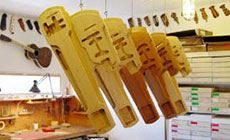

Yep!
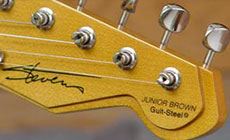
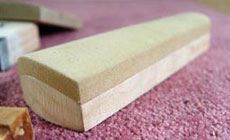
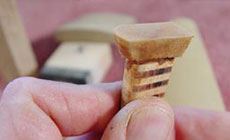
Mike buffs the tight spots and corners using shoe soles!

